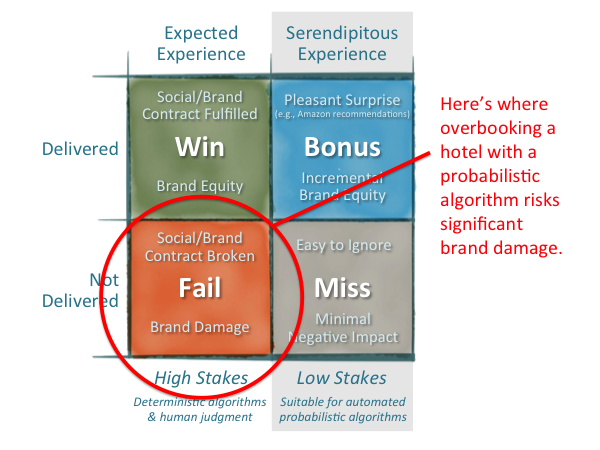A digital experience takes place when a customer has an interaction with an organization exclusively through digital technology. The world was already heading in an increasingly digital direction, but in the wake of COVID-19, as more and more teams and organizations have been working remotely and relying on technology to power their workflows, a strong digital customer experience has never been more imperative. What are some steps you can take right now to maximize your digital experiences?
- Invest in strong customer experience software
In order to ensure that they’re providing the best possible customer experience (or CX), companies need to prioritize their customer experience platform — cheaper one-trick-pony solutions won’t cut it. A strong CX platform will offer personalized options to the customer, ensure that their information is secure, and offer quick and reliable self-service when needed. Advanced data collection and machine learning personalization solutions included in a CX platform make a well-rounded solution crucial to invest in.
2. Provide a secure platform
When providing secure personal information such as a bank account or patient ID, customers need to be sure that private and personally identifiable information is handled safely and securely. Though customers are generally willing and enthusiastic to engage in convenient digital experiences, the major data breaches of recent years still leave plenty of consumers understandably skittish about providing organizations with personal info. According to data gathered by Lift361, “strong security increases overall customer satisfaction from 13% to 40%, and customers have shown they are willing to spend more with companies they trust to protect their privacy and data.” Ensure that your tech has personal security measures in place and be transparent with users and prospects about just how safe they can feel using your platform.
HCL Digital Experience is one of the most secure solutions out there, trusted by 8 out of 10 of the world’s largest banks
3. Make sure your solution “plays well with others”
Excellent digital experiences are ones where the user- or customer-facing experience may look and feel simple — but the back-end systems and processes might actually be very complex. Think databases of health and patient data, bank and financial transactions and accounts, government entities who need to share information or resources. These are the kind of transactions millions of people rely on every day to get about their daily lives. And many of the back-end systems are legacy systems — or don’t run in the same operational ways and business processes as others. Being able to bring these disparate and varied pieces together and deliver a unified, seamless, and even single-sign-on experience is what separates success and customer satisfaction and confidence from brand erosion and mass exodus to a competitor. Learn more about what to look for when you need to digitize business-critical processes here.
Another part of complexity that comes with delivering digital experiences is understanding who’s visiting and what they are doing. This data is part of what you need to know before you can deliver better, faster personalized experiences. The best solutions have analytics included, so that you can analyze and optimize with tools that offer “struggle” detection and resolution (for better, more personalized digital journeys), behavior insights (capturing and analyze site visitor behavior), and business analytics (so you get visibility into business impact and can improve experiences). The best solutions also let you scale, without compromising security, integrity, nor user experience.
4. Optimize your digital experience management process
DX management is the process of monitoring, assessing, and acting on your digital customer interactions. A strong digital experience platform will make sure your team members can keep track of each customer interaction — where are they in their journey? How often do your emails reach them? Have they expressed any frustrations working with your organization? DX management software should be able to:
- Personalize interactions
- Gather important customer and customer-journey data
- Categorize, deliver, and adjust based on those important data points and analytics
- Scale your CX as your business grows
- Flag customers that are at risk of churning
5. Provide omnichannel capabilities
It’s very likely that customers will use multiple channels to interact with your organization, like mobile, desktop, and even voice. Ensure that any action completed on one channel is automatically reflected on other channels, and make sure that your website is optimized for mobile. Customers should be able to click a link from an email on their email app, for example, and be seamlessly transferred to your site where they can easily complete their purchase. Make sure that large image assets or text blocks aren’t slowing down your site’s mobile loading.
6. Make sure you offer flexible deployments — including the cloud
With more and more businesses moving their digital experiences to cloud-based deployments, it’s crucial to carefully evaluate their current implementations and create a cloud strategy and path to getting there — and get the boost of cloud for driving transformation and differentiation. Organizations need to be flexible about their journey to the cloud, since there can be challenges inherent in migration mission-critical functions and workloads. The new hybrid-cloud support in solutions like HCL Digital Experience, means you can get the benefits of cloud — but preserve the value of existing on-premises investments and deployments — to help “future proof” digital experiences.
See also: 4 Features of a Cloud-Native Digital Experience
Investing in a stand-out DX solution like HCL’s Digital Experience is more important to businesses than ever, and that importance will only increase in the coming years. Schedule a demo with us to learn more about exactly how our DX software will best help your organization.





 slay today’s monster challenges
slay today’s monster challenges … just like Doom
… just like Doom .
.





